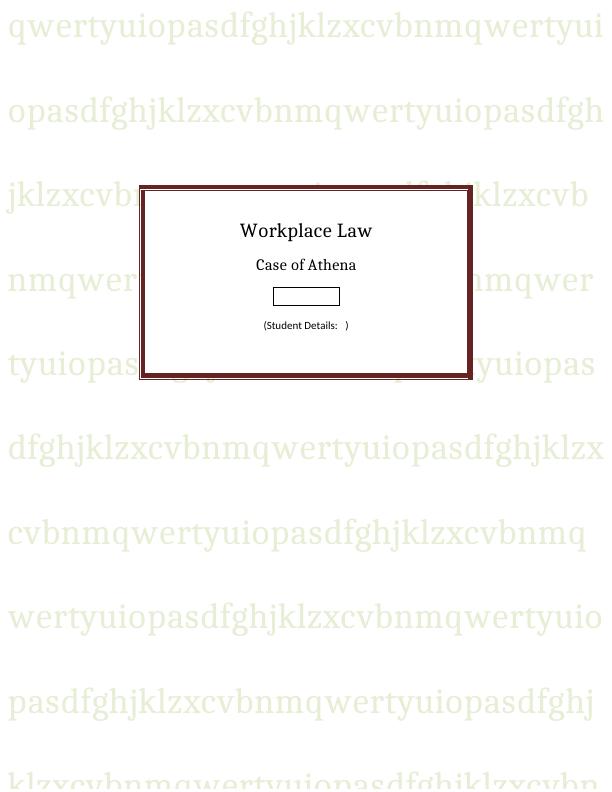Ask a question from expert
BSL202 Workplace Law: Assignment
10 Pages2205 Words287 Views
Workplace Law (BSL202)
Added on 2020-05-16
BSL202 Workplace Law: Assignment
Workplace Law (BSL202)
Added on 2020-05-16
BookmarkShareRelated Documents
End of preview
Want to access all the pages? Upload your documents or become a member.
Analysis of Athena's Employment Status and Breach of Fair Work Act
|9
|2012
|77
Workplace Law Assignment Questions based on Case Study 2017
|11
|2056
|221
Workplace Law
|9
|2064
|115
Employment Law: Analysis of a Case Study on Contracting and Sham Contracting
|9
|2102
|113
Workplace Law
|8
|1847
|372
Law of Business Organisation Assignment (Doc)
|9
|2281
|21


